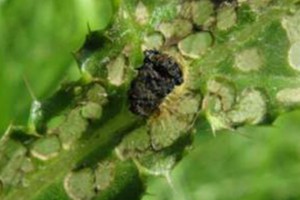About weed biocontrol
In this section
Why biocontrol?
Some weeds can’t be controlled effectively by conventional methods. Some weeds are difficult to kill with herbicides, and quickly resprout from roots or seeds after herbicide application. Other weeds are so widespread or found inaccessible areas that herbicide use is not economically feasible. Biocontrol agents can find the most inaccessible weed populations, and they persist to attack their host plants when they regrow.
Biocontrol can also be more environmentally friendly than conventional methods. Some weeds invade sensitive or rare native habitats, where herbicides would kill important native flora and fauna. Biocontrol agents eat only their target weeds, leaving desirable plants untouched, and they don’t pollute the soil or waterways.
Researching a new biocontrol agent isn’t quick or cheap.
The process can take 5−10 years and cost between $500,000 and $2,000,000. However, once established, biocontrol is inexpensive compared to other control methods. Unlike herbicides, which need to be reapplied regularly to control weeds, a well-established biocontrol agent can do its job with little or no additional input from people beyond the initial investment.
Agents used for biocontrol usually aren’t native. But that doesn’t make them pests.
Most insect species feed on just one plant or on a small group of closely related plants. Monarch butterflies only lay eggs on swan plants, and white butterfly caterpillars only feed on cabbages, cauliflowers, and other close relatives such as turnips. It is insects like these that biocontrol researchers choose for evaluation as control agents. The safety of introducing biocontrol agents is highly regulated by the Environmental Protection Authority (EPA) and MPI.
The ins and outs of biocontrol research.
There is an extensive process we follow to identify and introduce agents that are effective and safe. A biological control agent is safe to introduce into New Zealand if populations do not significantly harm New Zealand’s environment, economy, human or animal health or social structure. This process may take 5-10 years for each control agent. This process and the approvals required to release a biocontrol agent make New Zealand world leaders in biocontrol.
See Finding biocontrol agents.

